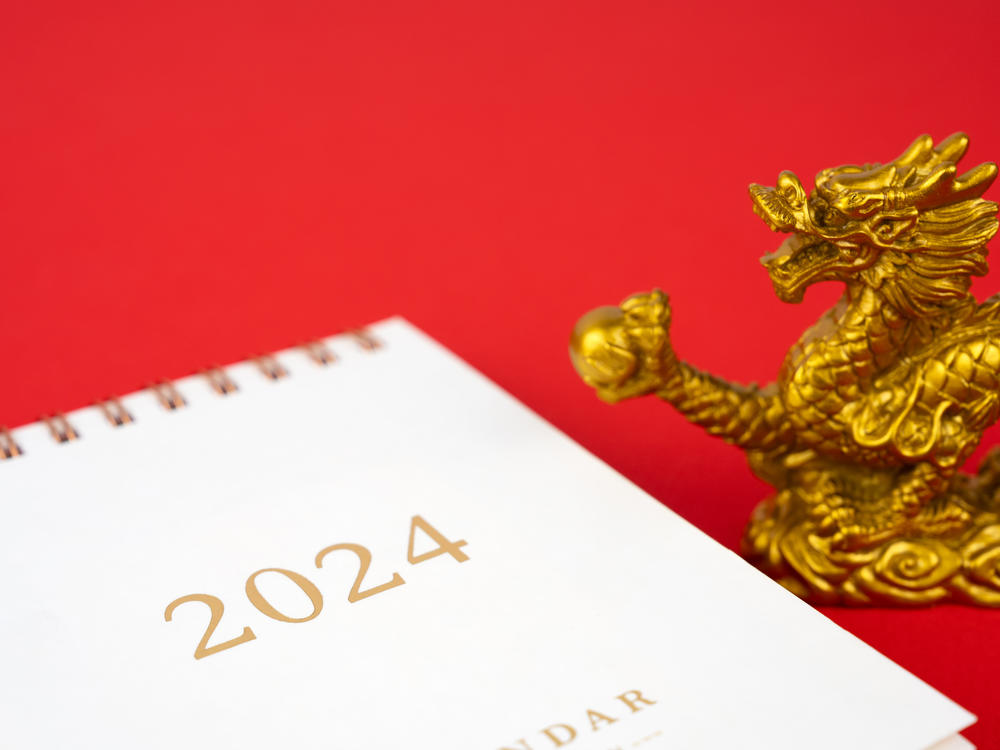Section Branding
Header Content
The science and shared history behind the Gregorian and Chinese calendars
Primary Content
Lunar New Year began Saturday February 10.
But have you ever stopped to wonder why it's celebrated at this time or where the current Chinese calendar comes from?
Space historian Osnat Katz Moon says there are three major types of calendars used to track time around the world:
- Solar calendars track the position of the sun in the sky and are used by much of the world today in the form of the Gregorian Calendar.
- Lunar calendars track the phases of the moon. Months follow the phases of the moon. The Islamic Calendar is an example of this.
- Lunisolar calendars track both the sun and the moon. The Chinese calendar is an example of this.
These differences in how time is tracked across calendars is why there are multiple New Year holidays such as the one that occurs on January 1 every year and the Lunar New Year that typically falls between late-January and late-February.
Planetary scientist Emily Lakdawalla says calendars are all about planning for the future. They can help plot out everything from the year's cultural events and agricultural seasons and harvests. "There's no reason to name the days and the months and to divide a year into segments unless you're trying to plan for future events," she says.
Katz Moon also says that throughout history which calendar people kept were "quite controversial because historically calendars have been tied to senses of identity." This is evident in the riot that broke out after England switched from the Julian to the Gregorian Calendar in 1752 and lost eleven days.
On the surface, various calendars may seem very different from one another.
But science historian Gianamar Giovanetti-Singh says that the Gregorian and the Chinese calendars, for example, have a shared history going back hundreds of years.
In the mid-1600s, Jesuit missionary Martino Martini visited China. The country was known to have extensive, meticulous historical records, and Martini's journey was a fact-finding mission. For decades, the Catholic Church had been trying to better understand the timeline of biblical history, like the great flood involving Noah's Ark.
At this same time, China was experiencing a crisis.
Many parts of the country were experiencing drought and famine, and the Ming Dynasty was on the verge of collapse. "That was an astronomical crisis, or a calendar crisis, as well because when one dynasty was ending, that meant that the mandate of heaven was up for grabs, essentially," he says. "It's in this context where astronomy becomes absolutely crucial to political victories."
During this vulnerable time, another missionary presented a version of the Gregorian calendar to the Ming emperor. The emperor quickly adopted it in his last year as ruler, while still including culturally-significant dates like Lunar New Year. And Giovanetti-Singh says that once the Qing Dynasty took power, they were eager to continue using it because it allowed them to more accurately predict celestial anomalies like solar eclipses that, in turn, reinforced their supposed divine mandate of heaven to rule.
Over time, the Chinese government became seen as a prosperous agricultural leader. And around 100 years later, Europe is devastated by the Seven Years War, which Giovanetti-Singh says was fought mostly in agricultural fields, leading to grain crises and famine.
"It's in that context that a group of French Reformists, the physiocrats, start pointing to China as a model to rebuild Europe's agriculture and to understand China's agriculture," he says. "They say you need to understand the Chinese calendar and Chinese astronomy."
But instead of taking the precise agricultural and astronomical science that could be pulled from the Chinese calendar, European leaders pulled in Chinese cultural practices. "So this is quite literally borrowing a Chinese astronomical concept and translating it into European politics," Giovanetti-Singh says. They hoped that doing so would strengthen their authority like the Spring Festival at the start of Lunar New Year did for the Chinese emperor when he plowed the fields every year.
Unfortunately, the French crown prince toiling in the soil didn't have the same effect.
"I t doesn't satisfy the grain crises that are ravaging France at this period of time," says Giovanetti-Singh. "There's this immediate association between all things Catholic, with all things Chinese that starts to emerge after the French King and the Holy Roman Emperor do the ceremonies, but it really doesn't turn out to be very good for them."
Perhaps it's a lesson to us all: Even the most mundane of tools for our daily lives have the power to sway history.
Email us shortwave@npr.org for more science history.
Listen to Short Wave on Spotify, Apple Podcasts and Google Podcasts, or listen to every episode of Short Wave sponsor-free and support our work at NPR by signing up for Short Wave+ at plus.npr.org/shortwave.
Today's episode was produced by Rachel Carlson. It was edited by Rebecca Ramirez. Brit Hanson checked the facts. TKTKTK was the audio engineer.

